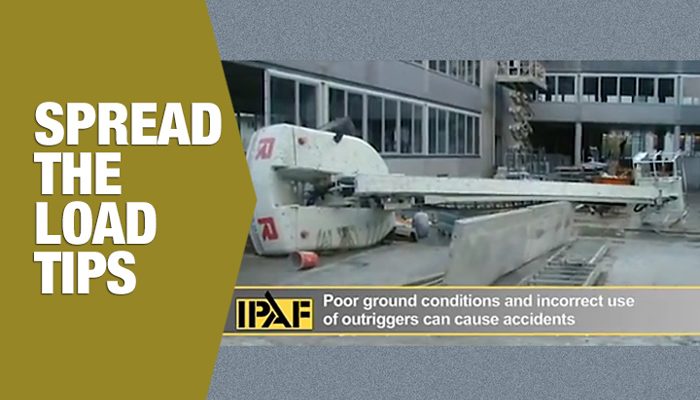
Safer MEWP use
31 December 2017
The importance of spreader plates
The use of spreader plates with boom lifts and outriggers can save lives and minimise the risks of overturning and instability. The IPAF ‘Spread the Load!’ campaign aims to encourage the use of spreader plates with powered access platforms and prevent accidents that are caused by inadequate risk assessments of unstable ground and incorrect set up of access equipment.
Why use spreader plates?
Spreader plates reduce the heavy loads and pressure at the point of contact between a boom lift or stabilizer leg and the ground, by spreading the load through a wider area.
When they are not used, the pressure can cause problems, even on seemingly stable ground surfaces, including instability, sinking or tipping over all of which can lead to serious injury and even death.
This short four minute IPAF video demonstrates how using spreader plates reduces the risk of overturning.
A typical 18m boom can weigh more than 10 tonnes and generate a ground bearing pressure more than 14.06kg/cm. If the spreader plate is just twice the size of the outrigger foot, it can reduce the ground pressure by four times.
Risk assessments for jobs at height need to consider ground conditions and potential issues below the surface such as services. However, it can be hard to tell how solid the ground is as conditions can change with the weather and can vary even on the same site.
Choosing the right spreader plates
Selecting the right size and type of spreader plate for specific locations and access equipment is important. Spreader plates should be big enough, stiff enough and strong enough to cope with the pressure and weight demands.
The following points should be considered before the job starts:
• Identify poor ground conditions, assess the load bearing pressure of the ground and calculate the correct size of spreader for the situation
• Plate size should reduce load-bearing pressure and provide a stable footing and not sink into the ground when in use
• They should be stiff enough to create high pressure points and not sink or distort
• Plates should be strong enough to bear the load without breaking
• The plates can be made from timber, aluminium or various plastics and resins.
• Varied ground and weather conditions mean even jobs on the same site may need different plates.
Summary
In most conditions, MEWPs are very safe and stable. However, instability and overturning may result from inadequate ground assessment, poor selection of spreader plates, or incorrect positioning of outriggers. Choosing the right spreader plates can significantly reduce the risk of accidents.
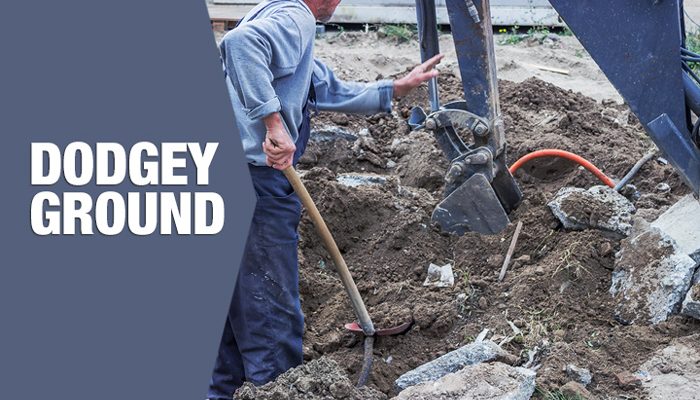
High Access MEWP Stability
24 December 2017
Tips to avoid costly accidents
Whilst power access platforms are designed to be strong and stable on a wide range of floors and spaces, whether on or offsite, the most common type of accident involving powered access platforms is still overturning. With due care and attention these dangerous and expensive incidents may be avoided. There are two main factors which can prevent stability problems: a basic understanding of stabilising equipment properly and carefully assessing the surface they are used on.
High Access MEWP Stability
Powered access platforms use various methods to stabilise on uneven ground – some spider lifts have adjustable legs that can be set up in different positions and on different levels and all-terrain vehicles can be set up on severely sloping gradients. Here are some key points to remember:
• Each machine has benefits and limitations so familiarise yourself with the specifics and only operate the machine within the manufacturer’s recommendations
• Inspect the machinery to make sure it is fit for use and ensure operators are fully trained
• Warning lights on the control panel will tell the operator if the machine is not level
• Outriggers generate high pressure at the feet which may not be supported by many areas of soil or unmade ground and even some paved areas, so additional foundations may be required
Checking the Ground
Ground conditions have a big impact on the stability of MEWPs and a ground survey should be completed before every job. The ground may settle when subjected to the loads of MEWP wheels or outriggers. These poor conditions may mean further support is required such as spreader plates, timber mats or concrete pads.
Ground condition assessment is also important for self propelled MWEPs such as booms and scissor lifts which may be driven along the ground with the platform raised. Moving from hard ground to soft may cause instability and overturn.
Level indicators provided on the MEWPs should be constantly monitored by the operator. If warnings are given when safe operating limits are exceeded, the platform should be lowered and the MEWP reset in a level position.
Spider platforms with outriggers should also be regularly checked for machine level especially if suspected that spreaders or mats may be sinking.
Potential Ground Condition Hazards
Prior to using a high access MEWP a visual inspection and assessment of ground conditions are often adequate (as opposed to having a full geotechnical survey). This assessment must be made by a person with the knowledge and experience to know if further expert advice is needed.
When checking the ground look out for these typical hazards…
• Uncompacted Fill – look for backfilled trenches and any cracking along the line of the trench
• Proximity to Excavations – If the MEWP needs to be used close to the edge of trenches or excavations where the outriggers or wheels may be in the “danger area”, then an engineering assessment must be made by a competent geotechnical engineer before the MEWP is set up and operated.
• Floors, Cellars, and Basements – Check the load bearing. Many floors are unable to take the weight of a MEWP and could collapse without warning. If in doubt get a geotechnical engineering assessment made.
• Paved Areas – May look strong but could have been laid on weak ground. Look for cracks and uneven slabs. Footpaths should be considered suspect and carefully checked.
• Underground Services – The weight of a MEWP may cause damage to sewers, drains, manholes and gas and water mains. Use caution.
• Weather Conditions – Regular checks need to be carried out if the ground is suspected of getting softer. Heavy rain and frozen ground thawing out can have adverse effects on MEWP stability.
Summary
MEWPs can be stabilised and perform safely and effectively on most surfaces and gradients provided a few basic things are taken into consideration. Get familiar with the machine’s warning devices and what it is capable of doing. Assess the ground conditions that you are working on to ensure you can use the machine to its optimum performance to help prevent avoidable stability accidents.
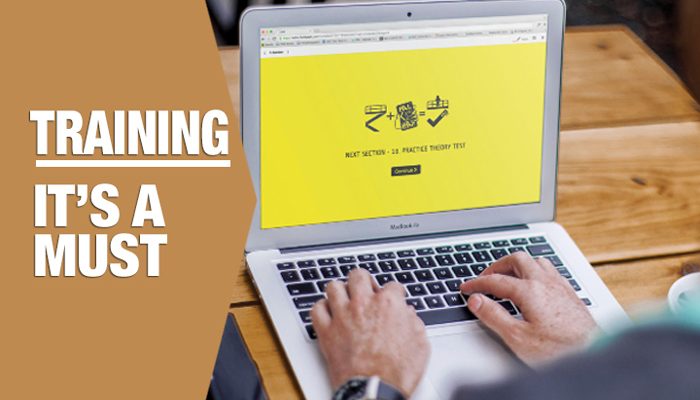
Training on MEWPs
17 December 2017
Review your Training on MEWPs
With the new year coming up soon. now is a good time to reflect on the past year and your training program for using powered access platforms. Both employers and individual users are liable if the people in charge of the machinery are not properly trained. Training on MEWPs can make working at height safer, quicker and more efficient but it should be remembered that operators need a PAL card and this needs to be renewed every 5 years. Are all log books up to date? Is a refresher course needed?
If your future job plans mean working in higher risk or challenging environments your operators may need a PAL+ card. Special training is available, for example, for working in confined overhead spaces or on challenging terrain.
There are courses for managers who are responsible for planning, supervising and effectively managing the use of powered access equipment. This is not about operating the machines per se, it’s about health and safety regulations, accident prevention and control, protective equipment and pre-use checks and maintenance schedules.
All levels of management would benefit from this type of training. This includes project managers, foremen and supervisors working in a broad range of industries such as construction, facilities management, retail, airports and arboriculture.
Who needs training on MEWPs?
Employers and individual users must make sure operators are properly trained. Rental companies are also obliged to direct their clients to appropriate training if they don’t deliver it themselves.
Courses are available for:
• Operators
• Demonstrators
• Instructors
• Managers
Accredited training centres are located across the country and courses can be held at their premises, or on a convenient site with suitable facilities.
What’s involved?
Training on MEWPs is a combination of classroom based study and hands-on experience with the equipment and includes:
• industry regulations and standards
• Choosing the right platform for the job
• Carrying out workplace inspections
• Operation of the powered access platform including demonstrated proficiency in all functions of the equipment
• How to recognise and avoid common hazards
• Operator warnings and instructions
• The purpose and use of manuals
• Carrying out a pre-start inspection
• Factors affecting stability
• Personal protective equipment
• General equipment components
• Safe use of equipment
• Understanding issues associated with larger machines: e.g. outriggers/stabilizers, extendable axles and envelope management systems.
New online eLearning Training
IPAF the aerial work platform industry professionals have recently developed an online eLearning training course for operators.
This new enhanced eLearning module is part of IPAF’s full training programme for operators of mobile elevating work platforms (MEWPs). The eLearning module delivers flexibility and interactive tools, with the same emphasis on practical training. Operator eLearning does not replace practical training. Trainees who complete the online session must still pass a supervised theory test at an IPAF approved training centre and must successfully complete a minimum half-day of practical training and testing.
Summary
Powered access platforms have many benefits for working at height but there is a legal obligation to make sure they are used safely and properly. Training staff is not only a legal requirement but jobs can be completed more efficiently if everyone involved knows how to use the equipment properly and dangerous and costly accidents are avoided.
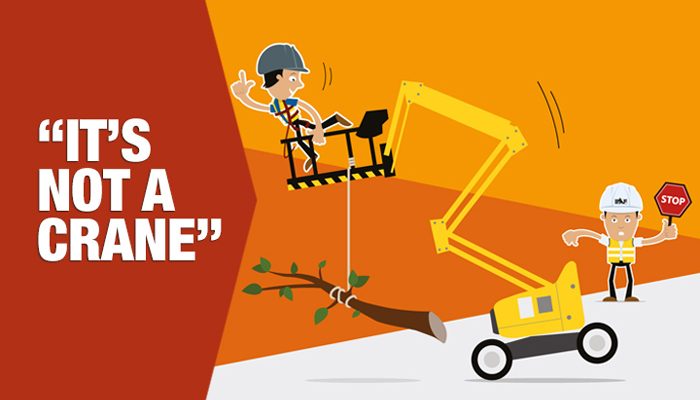
It’s not a Crane!
10 December 2017
IT’S A MEWP – NOT A CRANE!
Using MEWPs for working at height is one of the safest ways to reach those elevated areas to get vital work done. At this time of year power access platforms are doing their bit to bring festive cheer to brighten our day. Public spaces, malls and shops all rely on MEWPs to get the Christmas trees, decorations and lights in place all adding to the Season’s cheer.
Although the fatal injury rate for power access platforms is declining, there were still 66 reported MEWP fatalities in 2016. The main causes were falls from height, electrocution, entrapment and overturn of machinery. Chris Wraith, IPAF’s Safety & Technical Executive, commented: “While it is heartening to see the effective fatal injury rate fall … we must not be complacent. It is disappointing to see the same main causes of fatalities being repeated year on year, which suggests that the industry as a whole is not learning the lessons from previous incidents. Investigations show that accidents are most often due to management failings or operator error, which can in almost all cases be anticipated and avoided, or at least mitigated.”
The IPAF accident reporting project has identified a number of valuable learning outcomes and as a result, are reinforcing the key messages with a series of posters featuring the characters “Andy Access” and “Hugh Hazard”. These are available from www.ipaf.org/AndyAccess.
Using a MEWP as a crane may seem a quick, convenient idea but it is highly dangerous. As the IPAF poster reiterates “MEWPs are designed to elevate people, tools and equipment inside the work platform”. Using powered access platforms as a crane can easily tip the platform over creating a danger both for the occupant and those on the ground.
THE RIGHT EQUIPMENT FOR THE JOB
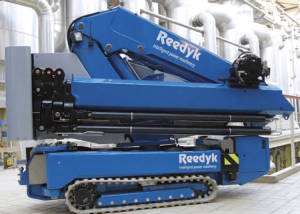
The compact crane and a compact powered access platform are the perfect partners to safely tackle those difficult to reach places where access is restricted. Choosing the right equipment for the job, proper training and good risk assessment are essential to help reduce accidents in the industry.